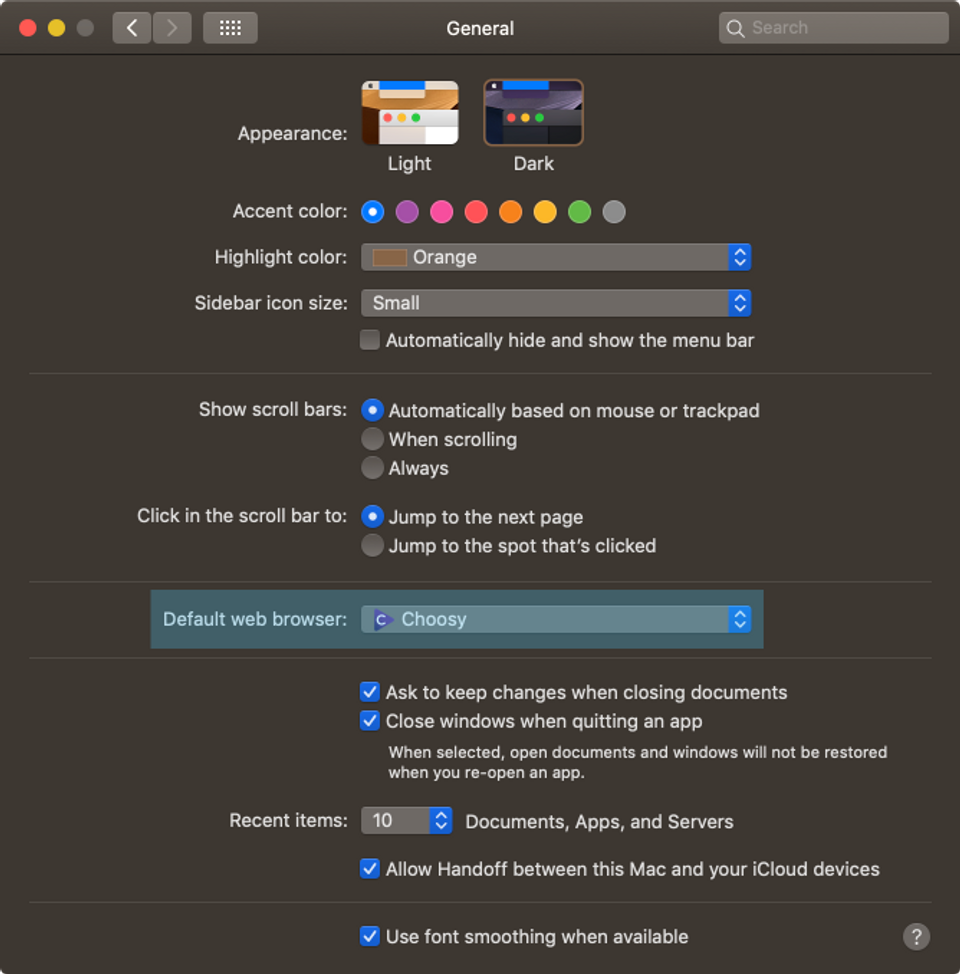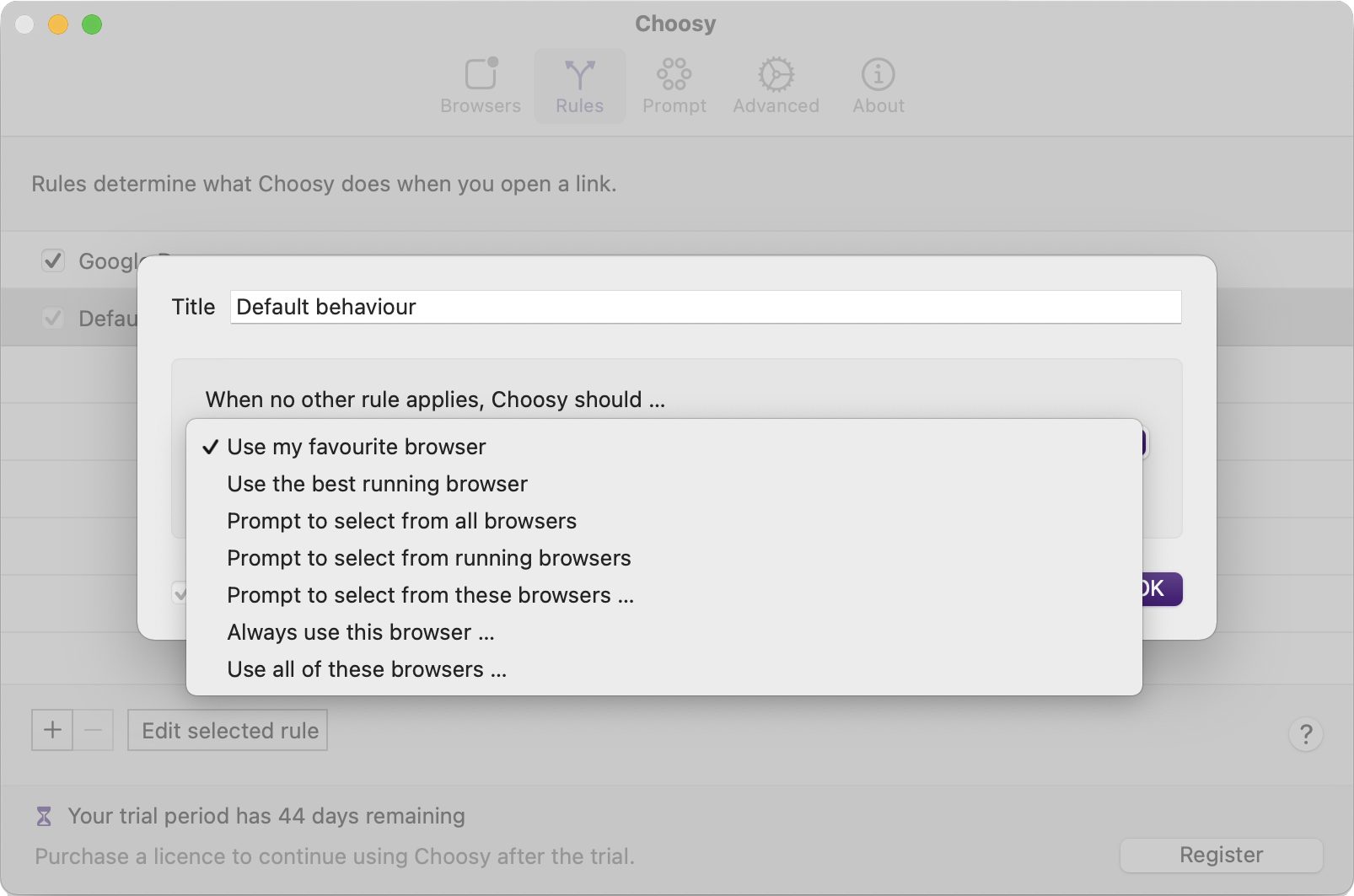
#CHOOSY BROWSER HOW TO#
Visa and Mastercard were seeking, at least in part, to diminish the potential for merchant or consumer confusion when exploring how to share a single pay button on e-merchant checkout pages. “It’s a new market, and everyone jumps in with both feet, then all of the sudden there is consolidation and 95 payment types transforms down to eight types because everyone in the market is not going to make it.” The advancement of multi-channel merchants - those with storefronts, websites and apps - is causing some consolidation of payment options, Bush said. Only half of the merchants surveyed said the mobile channel requires additional or specialized fraud tools, the lowest level in six years of the study.

Since 2013, Kount’s data indicates merchants have steadily reported an increase in awareness of mobile fraud risks, but about 35% of them still do not track mobile fraud or do not know whether fraud attempts increased or decreased last year. That, in part, explains the slip in mobile wallet acceptance. For the third straight year, the company noted “signs of complacency and even regression in terms of managing mobile fraud risk,” Bush said. “That is confusing to the consumer and their payment processor probably doesn’t accept all of them anyway.”īoise, Idaho-based Kount surveyed 600 e-commerce merchants in compiling its sixth fraud and payments survey. “What is starting to happen for online folks is they know they can’t put 20 different payment logos on their site,” Bush said. Today’s e-commerce merchants are looking at as many as 270 different digital payment types worldwide, depending on regions and countries, he added.

“But when they don’t see a lot of consumer acceptance, they know PayPal has been there for years, so let’s just go back to that.” “It’s a case where merchants are saying Apple has 800 million user accounts, so we’ll put Apple Pay on our site,” Bush said. Samsung Pay fell to 14% from 15%, Visa Checkout grew to 28% from 26%, Masterpass stayed at 8%, and Chase Pay at 6%.Īmerican Express Checkout enjoyed the biggest gain in support among the bank-supported brands, growing acceptance to 16% from 9% of merchants. However, support for PayPal increased from 48% to 64%, while the share accepting Samsung Pay, Visa Checkout, MasterPass and Chase Pay all stayed even or within two percent of the previous year. “The Apple Pay drop is pretty significant, but I believe the folks at Apple are putting a lot of eggs in the at-store basket, pushing it more at the physical POS and maybe neglecting the online market a bit,” said Don Bush, vice president of marketing at e-commerce fraud prevention and risk management provider Kount Inc. The percentage of e-commerce merchants accepting Apple Pay in 2018 is down to 35% from the previous year’s 48%, while Google Pay is down to 25% from 38% a year earlier, according to Kount’s annual Mobile Fraud & Payments Survey. This is causing merchants to abandon big-name wallet apps in favor of brands that have more history behind them. Rather than pile on more wallet options, businesses are pondering whether to create applications with embedded payments, establish a mobile browser or continue to use their e-commerce platforms as a browser.
#CHOOSY BROWSER MAC#
I'm super pleased that Mac allows me to set Chrome Canary as a default browser despite Google not wanting to allow it.The advancement of digital wallet technology in the past five years may be having a numbing effect on merchants, as new research indicates several major mobile wallets are losing momentum. Safari's preferences no longer allow you to select a default browser from dropdown but Mac's System preferences do! Navigate to "System Preferences" > "General" and you'll see a "Default Web Browser" label with a dropdown of the system's available browsers: Going to another browser to set a different browser as the default?! Whatever, it works. Each of the browsers you have on your system will display in the dropdown. Safari's preferences pane has a "Default Web Browser" dropdown for which you can set the default browser. checking email, researching coding techniques, writing, etc.), I wanted to make Chrome Canary my default browser, but when I click the button to do so, nothing happens. Since I do more browsing than developing (i.e. I prefer to do my basic browsing in Chrome Canary and my developing in Firefox Nightly. I like using edge browsers each day so that I'm aware of what features my website visitors will be seeing down the road, and to get an early glimpse at new browser and API features.


 0 kommentar(er)
0 kommentar(er)
